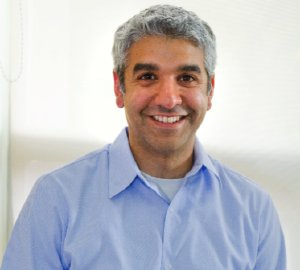Aug 19 2009
A young Berkeley Lab and University of California, Berkeley scientist has been recognized by Technology Review magazine as among the world's top innovators under age 35.

Cyrus Wadia, 34, was chosen for identifying materials that could be unexpectedly useful in solar cells.
The TR35 list was announced Aug. 18 by Technology Review, the oldest technology magazine in the world and a publication of the Massachusetts Institute of Technology (MIT). Selected from more than 300 nominees by a panel of expert judges and the editorial staff of Technology Review, the annual TR35 list is an elite group of accomplished young innovators whose work spans medicine, computing, communications, and nanotechnology.
"I am very honored to receive this award," says Wadia, who is a guest scientist in Berkeley Lab's Materials Sciences Division. He is also co-director of Clean Tech to Market at the University of California, Berkeley's Haas School of Business.
"This recognition validates our approach to scaleable, low-cost photovoltaics and will raise awareness of our research to the wider scientific community," Wadia adds. "If we are to deliver solar power to 7 billion people, then we need to change the way we think about material resource constraints and design a new paradigm for everything that goes into a finished solar cell."
Wadia's goal is to make solar energy affordable and accessible to everyone on the planet, especially to the 1.2 billion people now living without electricity. To reach this goal, he and colleagues are developing photovoltaic solar cells from naturally occurring, Earth-abundant materials such as iron sulfide and copper sulfide.
These cheap and plentiful materials could serve as alternatives to materials that are currently used to make solar cells, which have drawbacks that could limit their widespread implementation. Silicon is abundant but will remain relatively expensive because of high purity demands. Thin films, on the other hand, are cheap and have already delivered electricity at a much lower cost per watt than silicon. But these and other semiconducting materials cannot be produced in the quantities needed to meet worldwide electricity demand.
In this April, 2009 talk, Wadia discusses the development of new solar cell devices that have the potential to be several orders of magnitude less expensive than conventional solar cells.
How to Bring Solar Energy to Seven Billion People
To make solar energy affordable to everyone - which Wadia believes means delivering electricity as low as 75 cents per watt - he and colleagues are developing synthetic pathways to create copper sulfide and iron sulfide nanostrucutres. These are the building blocks for a new generation of low cost solar cells.
So far, they've demonstrated the first working solar cell from copper sulfide nanocrystals, and the first all inorganic nanocrystalline solar cell to be processed and deposited on a flexible substrate. They've also demonstrated a novel approach to synthesizing high purity iron pyrite, which in the future may be used in a photovoltaic device.
"The TR35 honors young innovators for accomplishments that are poised to have a dramatic impact on the world as we know it," said Jason Pontin, editor in chief and publisher of Technology Review magazine. "We celebrate their success and look forward to their continued advancement of technology in their respective fields."
Wadia and the other TR35 winners for 2009 will be featured in the September/October issue of Technology Review magazine and honored at an event held at MIT Sept. 22-24.
Other Berkeley Lab scientists who have received the honor in the past include Rachel Segalman of the Materials Sciences Division, J. Christopher Anderson of the Advanced Light Source, Peidong Yang of the Materials Sciences Division, and Jay Groves of the Physical Biosciences Division.